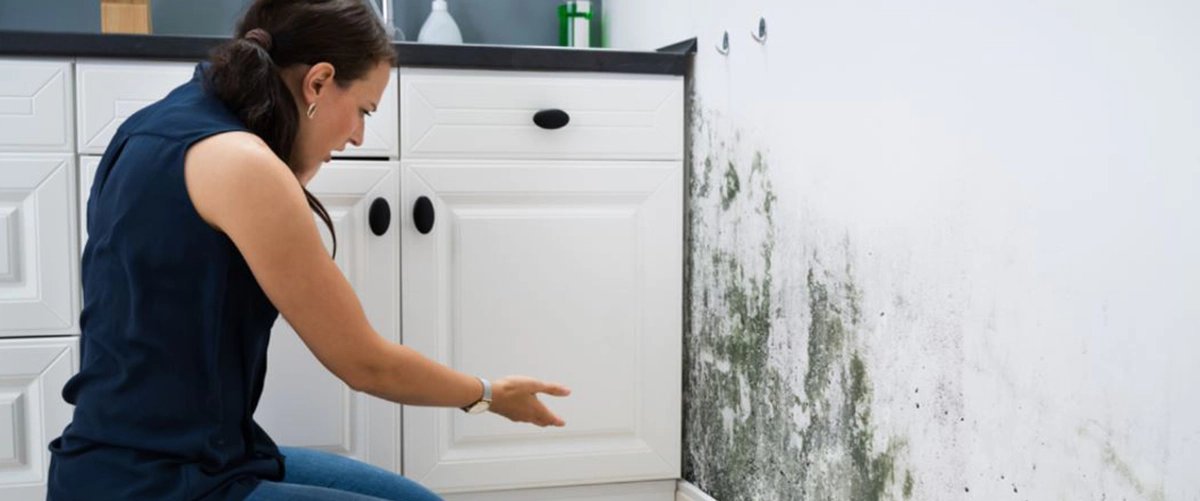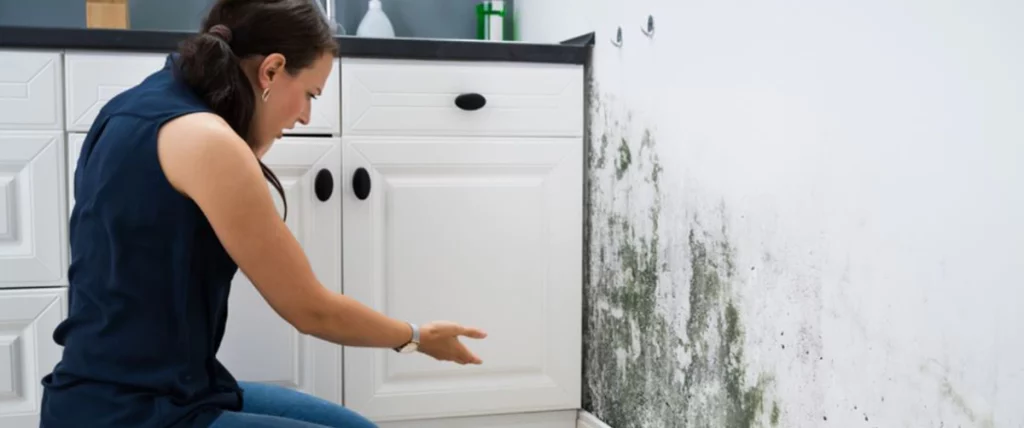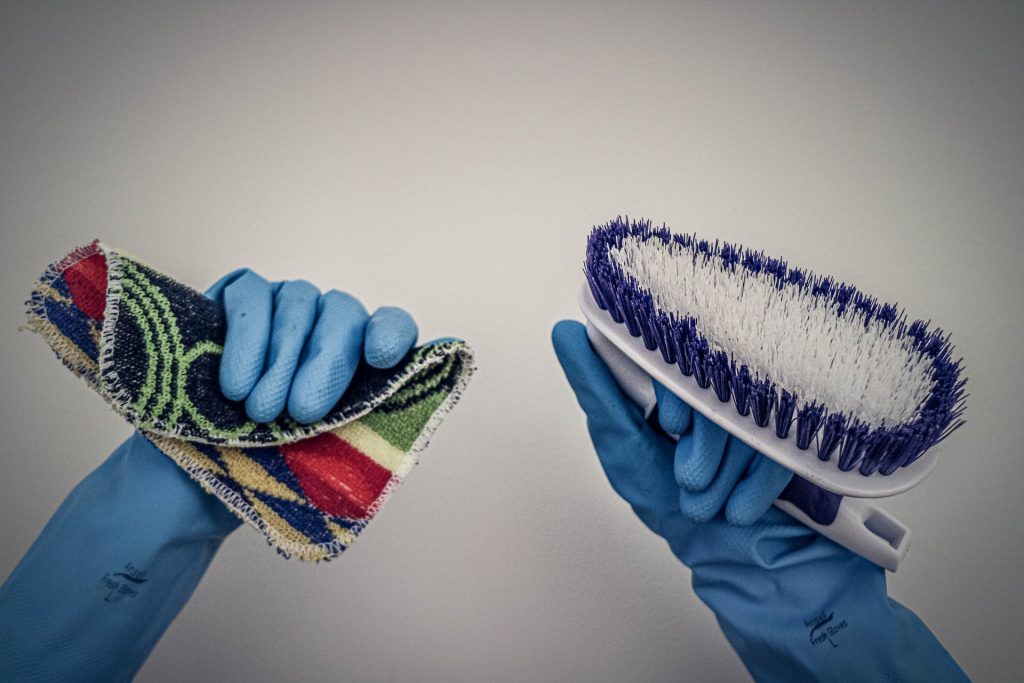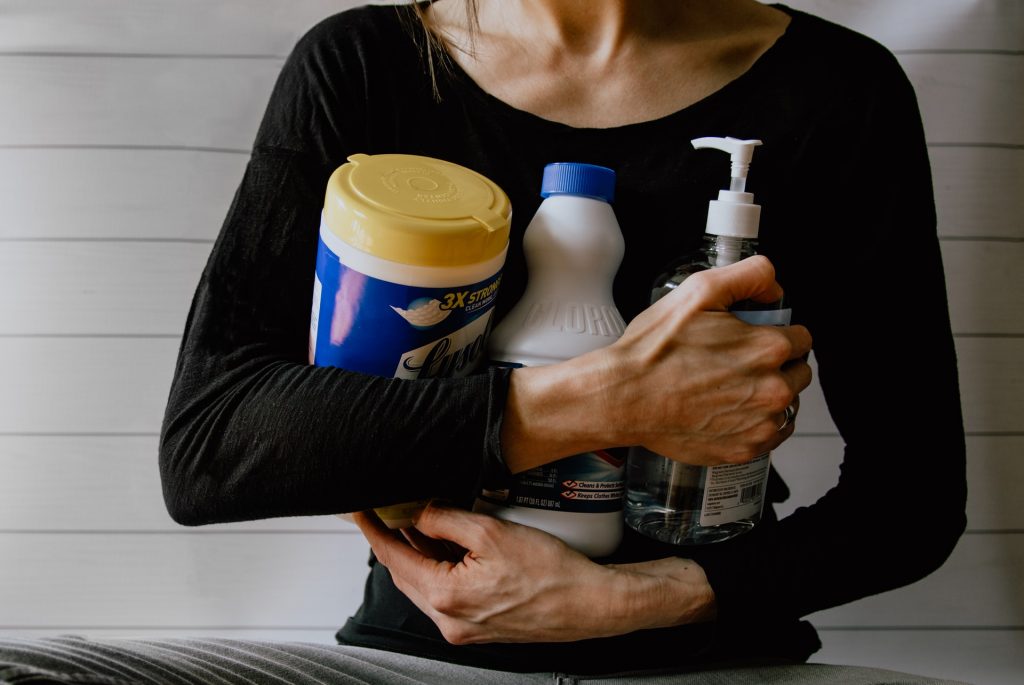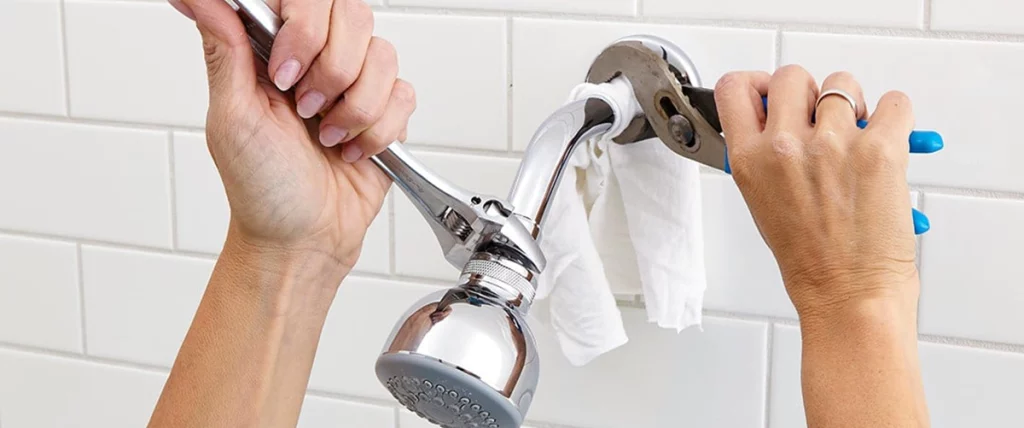Mould thrives in damp and humid environments, and its presence can pose significant health risks while also damaging the structural integrity of a property. Protecting your home or building from mould and moisture requires understanding the root causes and employing preventive measures. Here’s a guide to help you keep your property mould-free.
Contents
- 1 Understanding Mould and Moisture
- 2 Conducting a Moisture Inspection
- 3 Proper Ventilation Techniques
- 4 Humidity Control Strategies
- 5 Safe Mould Removal Procedures
- 6 Professional Remediation Services
- 7 DIY Prevention vs. Hiring Experts
- 8 When to Consult a Professional to Protect From Mould and Moisture
- 8.1 Extensive Mould Growth
- 8.2 Structural Damage Suspicions
- 8.3 Recurring Mould Issues
- 8.4 Poor Indoor Air Quality or Health Symptoms
- 8.5 Uncertainty About Mould Presence
- 8.6 After Flooding or Water Damage
- 8.7 Ventilation and Humidity Concerns
- 8.8 Planning Home Renovations
- 8.9 Historical or Older Homes
- 8.10 DIY Remediation Concerns
- 8.11 FAQ about protecting property from mold and moisture
Understanding Mould and Moisture
Mould is a type of fungus that thrives in damp conditions. It reproduces by releasing spores into the air, which can pose health risks if inhaled. Moisture is the primary factor that encourages mould growth in homes and buildings. When excess moisture is present, either due to leaks, poor ventilation, or high humidity, mould can rapidly grow on surfaces such as wood, drywall, and fabric.
Conducting a Moisture Inspection
Before you can effectively combat mould, you need to identify its source:
Visual Inspection: Check for visible signs of mould or dampness, like discolouration or water stains.
- Smell Test: Mould often emits a musty odour.
- Moisture Metres: These devices measure the moisture content of materials.
- Hire Professionals: If unsure, a professional can conduct a thorough moisture and mould inspection.
Proper Ventilation Techniques
Proper ventilation is essential to ensure a healthy indoor environment. It reduces excess moisture, removes stale air, and ensures an adequate intake of fresh air, which helps to decrease the risk of mould growth and improves indoor air quality. Below are some proper ventilation techniques to consider for homes and buildings:
Understand Ventilation Basics
Natural Ventilation: Relies on passive air movement through doors, windows, and other openings.
Mechanical Ventilation: Utilises fans and ventilation systems to move air in and out of the building.
Balanced Ventilation: Involves both intake (supply) and exhaust mechanisms to ensure equal air distribution.
Use Exhaust Fans in High-Moisture Areas
Bathrooms: Install and use exhaust fans to remove moist air produced during showers or baths.
Kitchens: Range hoods or exhaust fans help in removing cooking fumes, heat, and moisture.
Laundry Rooms: Extract excess moisture produced by washing machines and dryers.
Implement Whole-House Ventilation Systems
Supply Ventilation Systems: Use fans to push outside air into the home.
Exhaust Ventilation Systems: Use fans to pull air out of the house, reducing indoor air pollutants.
Balanced Ventilation Systems: Combine both supply and exhaust to regulate air intake and outflow evenly.
Heat Recovery Ventilation (HRV) or Energy Recovery Ventilation (ERV): Transfer heat or energy from outgoing air to incoming fresh air, optimising energy efficiency.
Regularly Open Windows and Doors
Cross Ventilation: Open windows on opposite sides of a room or building to allow fresh air to flow through.
Night Cooling: In cooler climates or seasons, open windows at night to let in the cool air and close them during the day.
Maintain Attic Ventilation
Roof Vents: Install ridge and soffit vents to ensure a continuous airflow from the attic’s base to its peak.
Gable Vents: Positioned on a building’s vertical peak, these allow hot, humid air to escape.
Attic Fans: Help in pushing out the hot air and drawing in cooler outside air.
Аdequate ventilation is vital for both health and property preservation. By employing the above techniques, one can maintain a comfortable, safe, and energy-efficient indoor environment.
Humidity Control Strategies
Controlling humidity is essential to prevent mould:
Dehumidifiers: These can reduce indoor moisture, especially in damp basements.
Weather-Stripping: Seal windows and doors to prevent moist outdoor air from entering.
House Plants: Some plants, like peace lilies, can help absorb moisture.
Exterior Waterproofing Methods
Protecting your property from the outside is equally crucial:
Gutters: Ensure they’re clean and direct water away from the foundation.
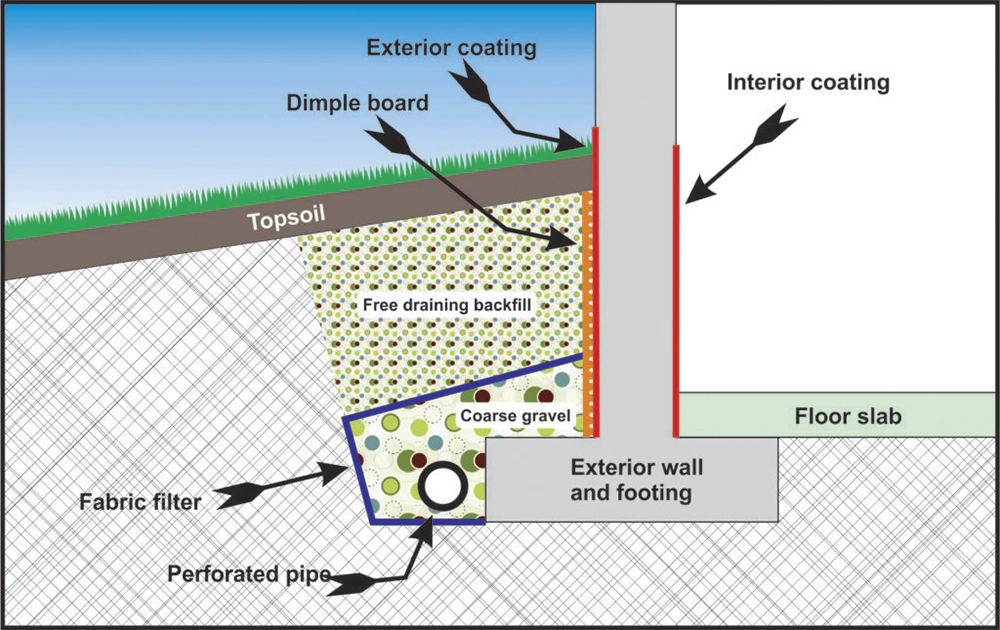
Landscaping: Slope the ground away from your property to avoid pooling water.
Foundation Sealing: Use waterproofing compounds to seal any cracks.
Interior Waterproofing Options
Protect the inside of your home from moisture:
Sealants: Waterproof paints and sealants can prevent moisture penetration.
Sump Pumps: Install in basements to pump out excess water.
Waterproof Barriers: Install under flooring or behind drywall to block moisture.
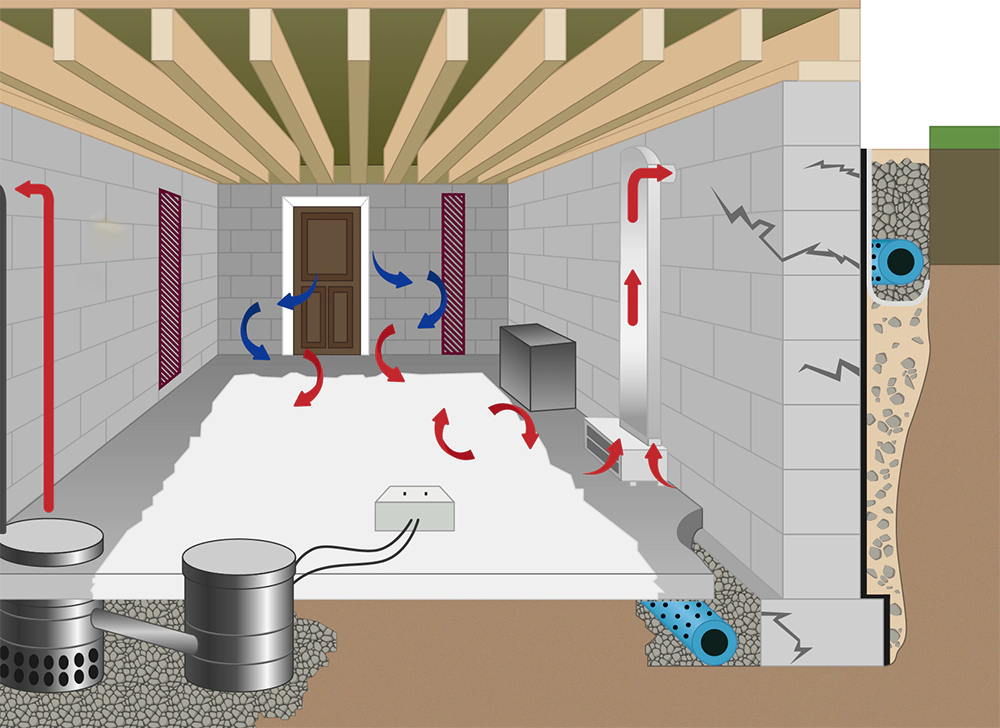
Mould Removal and Remediation
If you detect mould, immediate action is essential:
Isolate the Area: Prevent spores from spreading by sealing off the mouldy area.
Wear Protection: Use masks, gloves, and goggles.
Use Mould Killing Solutions: Natural solutions like vinegar or commercial mould removers can be effective.
Safe Mould Removal Procedures
Mould growth in homes and buildings is a common issue that can pose health risks and damage property. Removing mould safely is essential to prevent its spread and reduce health hazards. Here’s a guide to help you undertake mould removal procedures safely and effectively:
- Avoid Bleach: It doesn’t prevent mould return and can pose health risks.
- Dispose Materials: Mouldy materials, like carpet or drywall, might need removal.
- Dry the Area: After cleaning, ensure no moisture remains.
Professional Remediation Services
Sometimes, the best approach is to hire experts who:
Assess the Situation: They can determine the mould’s extent and cause.
Have Specialised Equipment: For thorough removal and prevention.
Offer Guarantee: Many provide a guarantee against mould return.
DIY Prevention vs. Hiring Experts
While DIY methods can be effective for minor issues, extensive mould damage or hard-to-reach areas might need professional intervention. Weigh the costs, time, and safety considerations.
When to Consult a Professional to Protect From Mould and Moisture
Mould and moisture can cause significant health concerns and damage to properties. While some minor issues can be addressed with DIY measures, there are situations where it’s essential to consult a professional. Recognizing when expert intervention is needed can save time, money, and ensure the health and safety of inhabitants. Here are instances when it’s advisable to call in the pros:
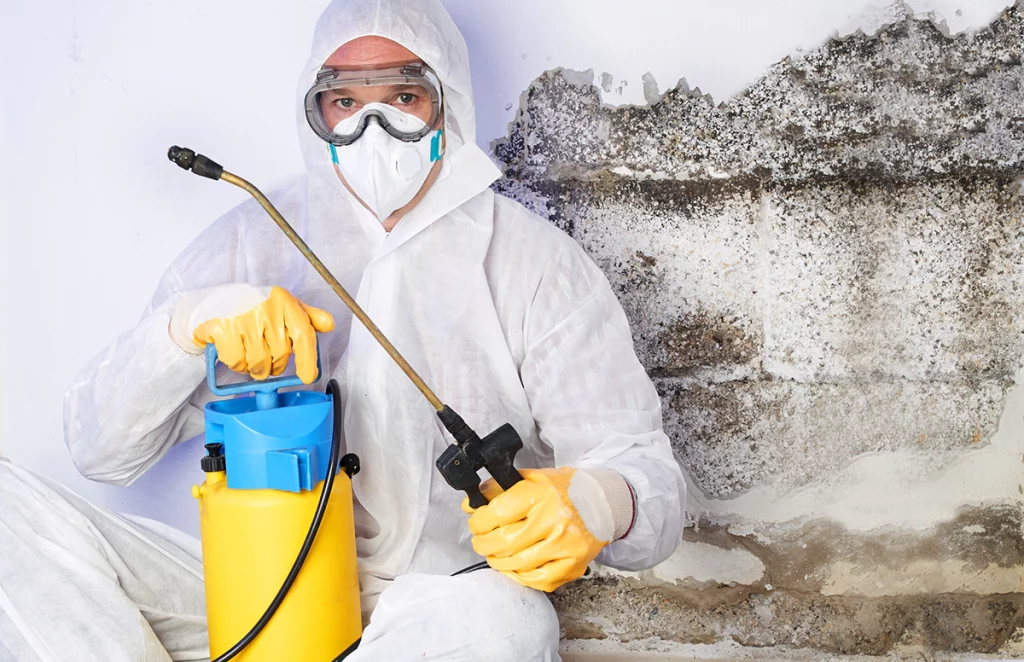
Extensive Mould Growth
If mould covers a large area (typically more than 10 square feet), professional removal is advised. Experts have the necessary equipment and know-how to address such infestations safely and thoroughly.
Structural Damage Suspicions
Mould can weaken structural components of a building, such as wooden beams or supports. If you suspect structural damage due to mould or moisture, a professional assessment is crucial.
Recurring Mould Issues
If you’ve cleaned an area and mould returns, it suggests a deeper, unresolved issue. Professionals can identify and rectify underlying problems, like hidden water leaks.
Poor Indoor Air Quality or Health Symptoms
If inhabitants experience symptoms like coughing, sneezing, eye irritation, rashes, or respiratory problems, mould might be affecting indoor air quality. A professional can test the air and address the mould source.
Uncertainty About Mould Presence
If you smell a musty odour but can’t see any visible mould, a professional can conduct tests to detect hidden growth behind walls, under carpets, or in other concealed areas.
After Flooding or Water Damage
If your property has recently experienced significant flooding or water damage, mould growth can be rapid and extensive. Consulting a professional ensures that all areas are dried, cleaned, and restored properly.
Ventilation and Humidity Concerns
If rooms constantly feel damp, or windows frequently condensate, it may indicate a ventilation or humidity problem. Professionals can assess and recommend solutions like installing ventilation systems or dehumidifiers.
Planning Home Renovations
If you’re renovating parts of your home prone to moisture, like basements or bathrooms, consulting a mould and moisture professional can provide guidance on preventive measures and best materials to use.
Historical or Older Homes
Older homes may have outdated ventilation systems and be more susceptible to mould and moisture issues. Professionals can advise on modern solutions while preserving the home’s historical integrity.
DIY Remediation Concerns
If you’re unsure about the safety or effectiveness of DIY mould removal methods, it’s better to consult with a professional to ensure proper and safe removal.
In conclusion, while smaller mould and moisture issues can often be addressed independently, larger, persistent, or health-related concerns should prompt a call to professionals. They offer expertise, advanced equipment, and comprehensive solutions, ensuring your property remains safe, healthy, and mould-free.
FAQ about protecting property from mold and moisture
Ensure proper drainage by keeping gutters clean and directing downspouts away from the foundation. Install or maintain a sump pump, regularly check for plumbing leaks, and seal basement cracks. Landscape your yard to slope away from your home.
Signs include discoloured spots or rings on walls/ceilings, peeling paint or wallpaper, a musty odour, buckling or warped flooring, and unexpected spikes in water bills.
Check your sump pump at least once a year, preferably before the rainy season, and after significant storms. If you live in an area prone to frequent heavy rains, consider checking it quarterly.



